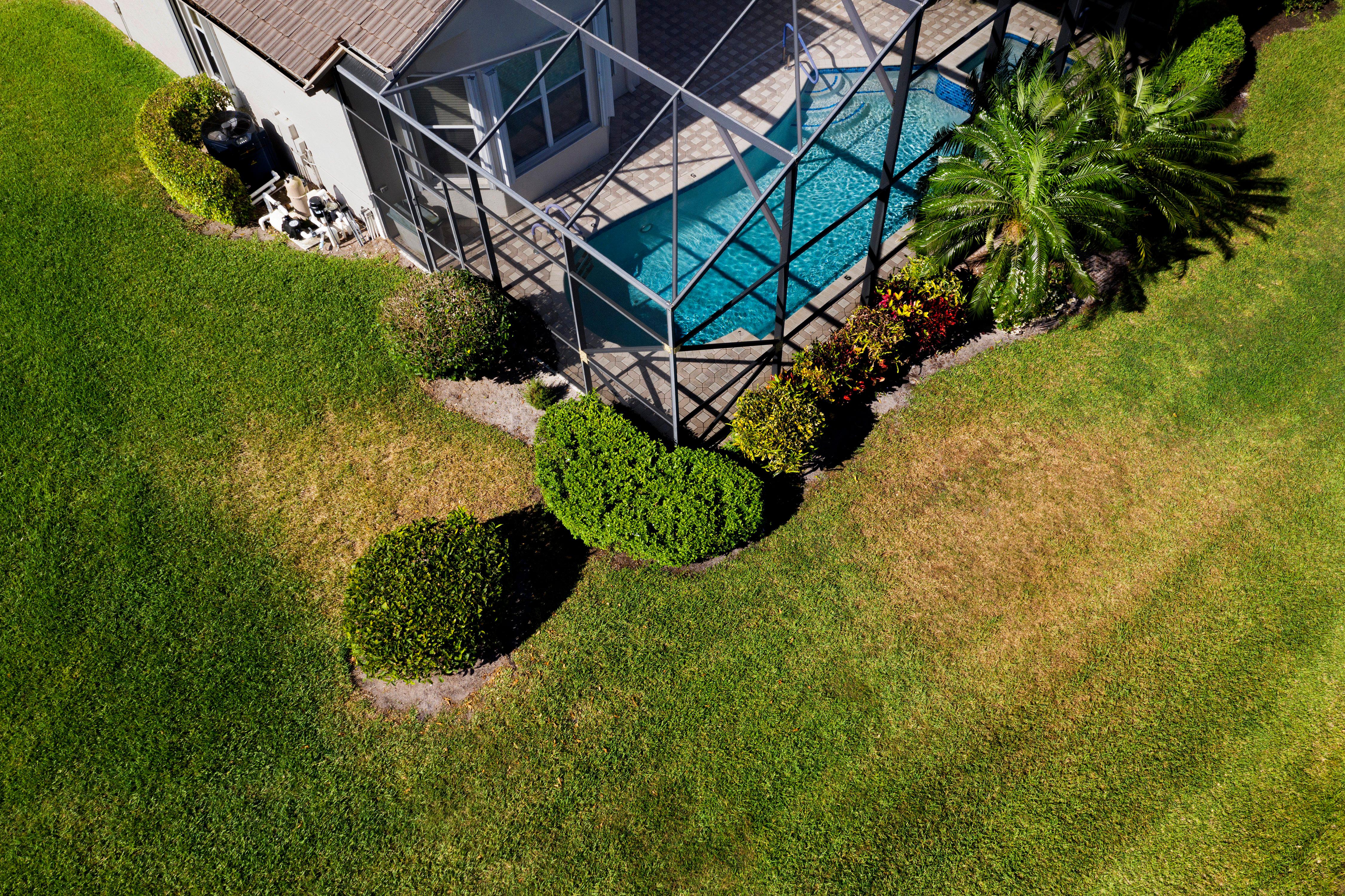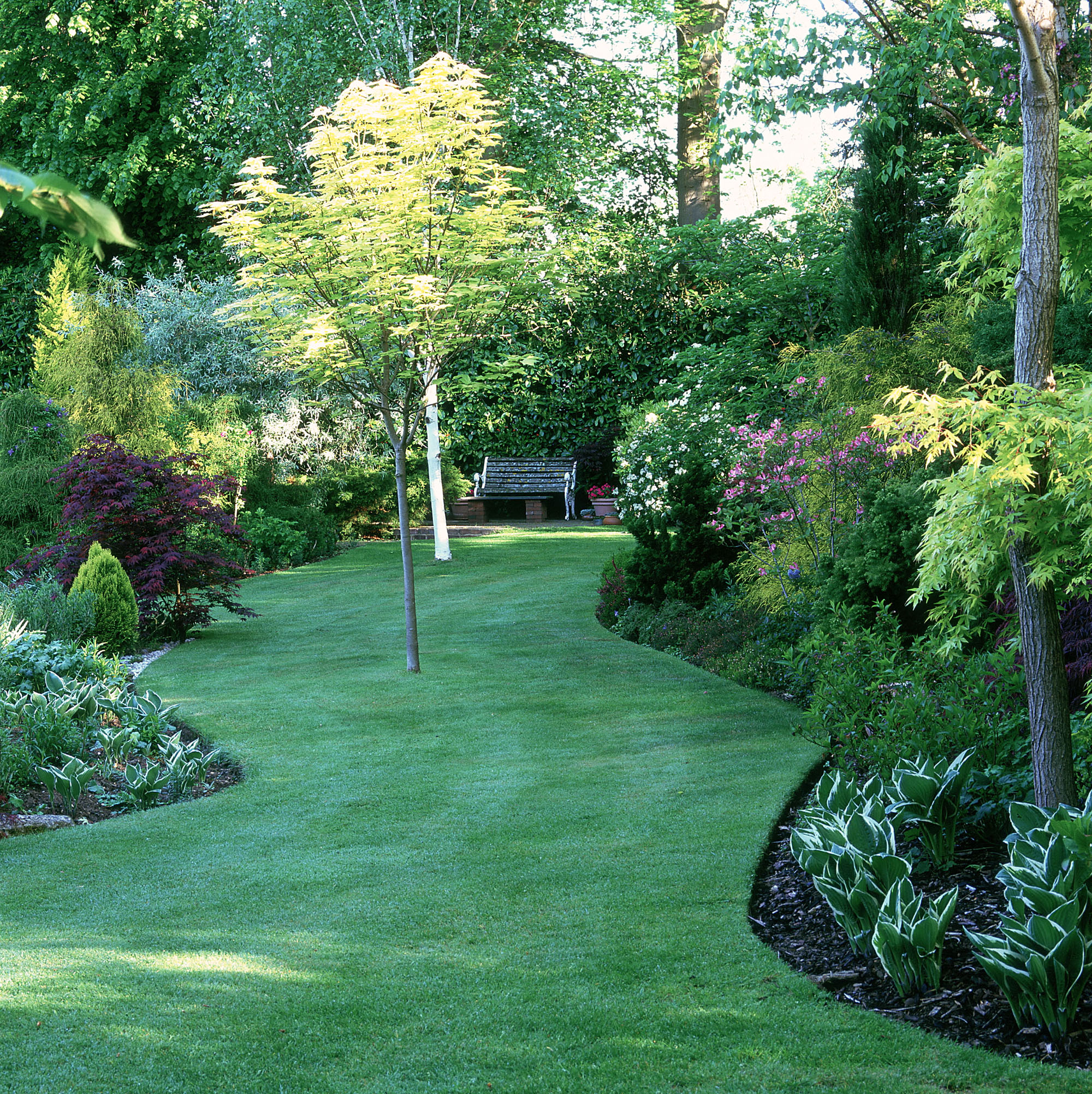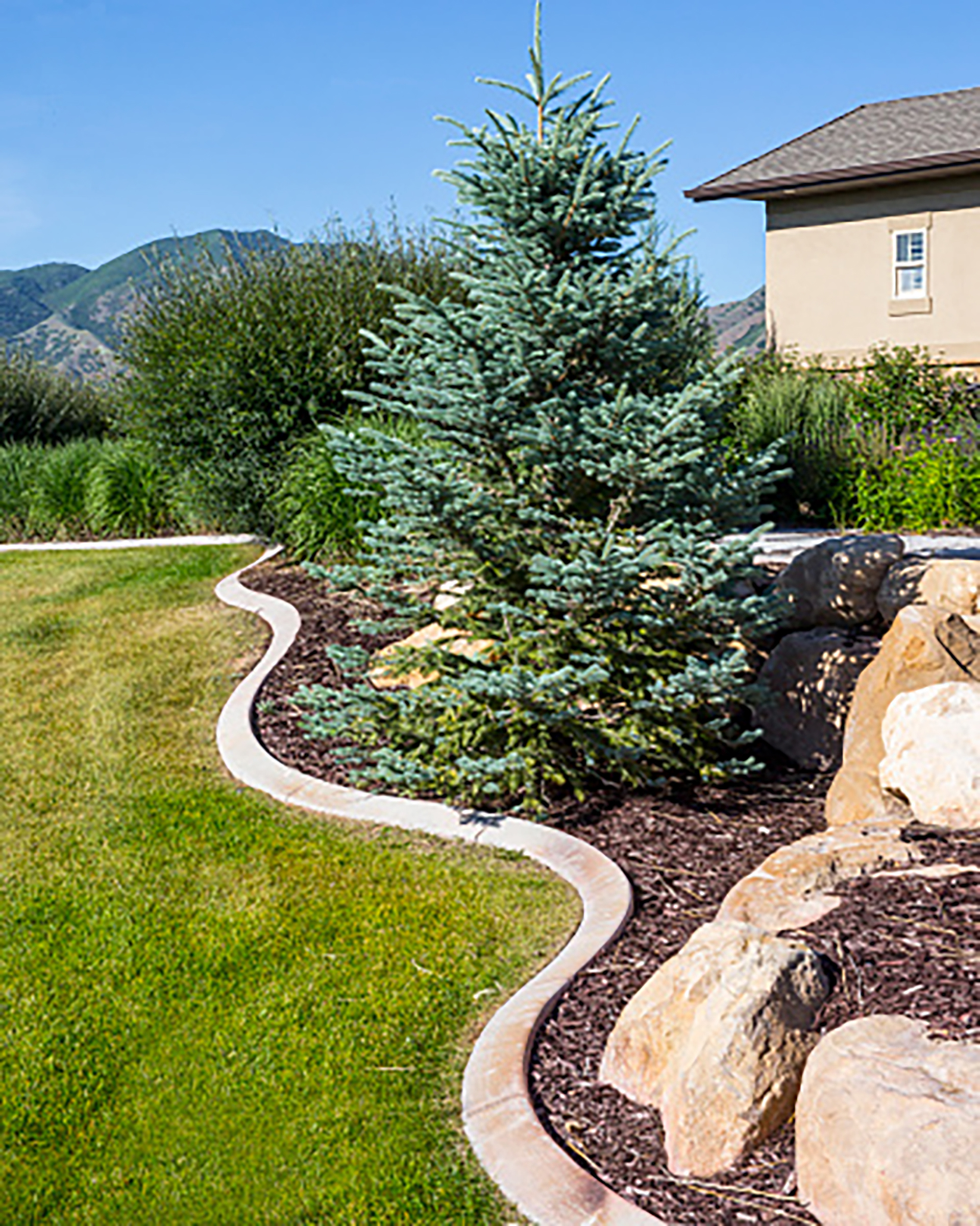When to add lime to lawns – why you may need to and how to do it
If you're wondering when to add lime to lawns then follow this expert advice to ensure luscious, green grass


If you want your garden looking its best you need to know when to add lime to lawns.
A beautiful, healthy lawn is one of the elements you will look to achieve as part of your backyard landscaping ideas. Once you have learned how to plant grass seed for a flawless lawn, there are then various jobs you will have to do to maintain green and luscious grass.
The reason you will add lime to lawns is to balance the pH levels in the soil underneath. Just as you need to check the pH levels and soil type for certain plants to grow well, likewise to achieve a healthy lawn, you might need to add some lime.
Adding lime is in addition to fertilizing a lawn – lime is not the same and as it is not a substitute for fertilizing. You should also still continue with other lawn maintenance tasks, such as repairing patches in grass and knowing how to aerate a lawn.
Although this might initially sound a little confusing, it is actually far simpler than you'd think. Follow this expert advice to make sure you are adding lime at the correct time, the right type of lime, and how to do it.
When to add lime to lawns

If you’re wondering when to add lime to lawns the answer is that you will only need to do so when the pH levels in the soil require it.
Lawns need lime when soil pH starts inhibiting the availability of nutrients.
'A soil’s pH level is a measure of its acidity or alkalinity, and plays a significant role in determining the overall health of your lawn. The ideal pH range is between about 6.0 and 7.0 – anything higher or lower may result in unsightly, slow-growing turf. Lime is applied when a lawn's soil is too acidic,' explains Chris Lemcke, national technical director of Weed Man, North America’s largest network of locally-owned and operated lawn care businesses.
The ideal pH level for lush and healthy grass will vary depending on the hardiness zone where you live: in warmer areas the grass will need a lower pH level, whereas in cooler regions it should be higher.
To determine whether your soil requires lime, a pH test would be conducted.

Why do you add lime to lawns?
The reason for adding lime to lawns is because it 'plays a crucial role in lawn maintenance, balancing the pH and providing the calcium your lawn needs to thrive. Liming your lawn is the most effective and cheapest method of correcting acidic soil. Over time the lime breaks down in the soil causing calcium levels to rise and acidity to be brought into check. The nutrients your grass needs are more readily available in the soil when the PH levels are optimal. Once this process is underway you'll slowly see your lawn becoming thicker and richer in color, ' explains Andrew Porwol, owner of Garden Centre Shopping.
'Liming also helps soil microbes and worms to thrive, fostering a fertile soil environment rather than a stagnant one,' adds Chris.
You will soon spot the signs for when to add lime to lawns, as the grass will look less healthy, lose color and will suffer, and other plants, such as moss and weeds, may grow in its place.
What is the best month to lime your lawn?
'In general, the best time to lime your lawn will be in the fall. This will give the lime plenty of time to transform your acidic soil before the next growing season,' explains Chris.
'Fall is the best time because the combination of rain and snow, along with the process of freezing and thawing, aid in the breakdown of the lime into the soil. Once the warmer weather arrives and spring starts the nutrients will be there for your lawn to grow,' adds Andrew.
Fall is also the time when you might want to overseed your lawn.
However, the spring time is also a suitable time to lime your lawn, Chris adds, 'just do not lime your lawn during the summer months.'

What is the best way to put lime on your lawn?
The best way to put lime on a lawn depends on the type of lime that you use.
'There are different types of lime that can be used. Dolomitic lime is the most commonly used on lawns. Dolomitic lime comes from dolomite, which is a rock that is similar to limestone but contains magnesium in addition to calcium. Since magnesium can be a beneficial addition, we always recommend using it over just an agricultural grade lime that just has calcium. Burnt or hydrated lime should not be used on lawns. They are too caustic,' explains Chris.
In terms of the application of the lime, 'it comes in both pellet and powder form and both are equally effective in stabilizing the pH of the soil. That being said, using a pellet or granular form of lime is easiest to apply and it can be applied using a rotary spreader,' explains Chris.
'Powder forms of lime are not recommended as the powder can be a concern if you breathe it in and it is recommended that you wear a mask when applying it. It's best to leave the application to a professional, when possible,' he adds.
'It's important to cover your entire lawn to avoid patches. I use a pellet spreader and start off by walking from north to south up and down the garden. Once I've covered the entire lawn I'll repeat the process but walking east to west,' adds Andrew Porwol of Garden Centre Shopping.
'You can also use a push mower to help distribute the lime. Be sure to read the directions on the lime product you are using, as some products may require different application methods,' adds Lindsey Hyland, gardening expert and creator of Urban Organic Yield.

How often should you put lime down on your lawn?
You should only put lime down on your lawn when it needs it.
'If your lawn is looking sparse and moss or other unwanted weeds are starting to grow, the chances are you need to lime. Before liming you need to analyze the soil to understand how much lime to add. You should analyze your lawns soil yearly until it's established and then every 3 years is typically enough to make corrections,' explains Andrew Porwol.
Can you put too much lime on your lawn?
You could put too much lime on your garden if the pH level is not too low.
'You should lime a lawn when the soil pH falls below about 6.5, which will happen typically every 2-3 years. You can test the pH of your soil by using a home kit or having it tested at a local garden center. If the pH is below 6.5, then a light application of lime will help to bring it back up to the correct level and improve the overall health of your lawn,' says Lindsey Hyland.
You can test your soil using a pH soil tester or kit. 'The pH scale runs from 1 to 14, with 7 being neutral. Soil with a pH below 7 is acidic, while soil with a pH above 7 is alkaline. You can buy a pH soil tester at most garden centers or online,' Lindsey adds.
Sign up to the Homes & Gardens newsletter
Design expertise in your inbox – from inspiring decorating ideas and beautiful celebrity homes to practical gardening advice and shopping round-ups.
Rachel is senior content editor, and writes gardening content for homesandgardens.com, Homes & Gardens magazine, and its sister titles Period Living Magazine and Country Homes & Interiors. She has written for lifestyle magazines for many years, with a particular focus on gardening, historic houses and arts and crafts, but started out her journalism career in BBC radio, where she enjoyed reporting on and writing programme scripts for all manner of stories. Rachel then moved into regional lifestyle magazines, where the topics she wrote about, and people she interviewed, were as varied and eclectic as they were on radio. Always harboring a passion for homes and gardens, she jumped at the opportunity to work on The English Home and The English Garden magazines for a number of years, before joining the Period Living team.
-
 I’m an HVAC technician, and this is when I turn my AC on each year – plus 5 checks I always do beforehand
I’m an HVAC technician, and this is when I turn my AC on each year – plus 5 checks I always do beforehandSave yourself an AC hassle by running my checks and turning it on before big heat hits
By Josh Mitchell Published
-
 This simple marble hack elevates my budget-friendly wooden kitchen countertops and prevents the dreaded water damage for way less than you’d think
This simple marble hack elevates my budget-friendly wooden kitchen countertops and prevents the dreaded water damage for way less than you’d thinkThis design trick looks expensive, solves a problem, and was the easiest decision I made during my kitchen reno
By Charlotte Olby Published